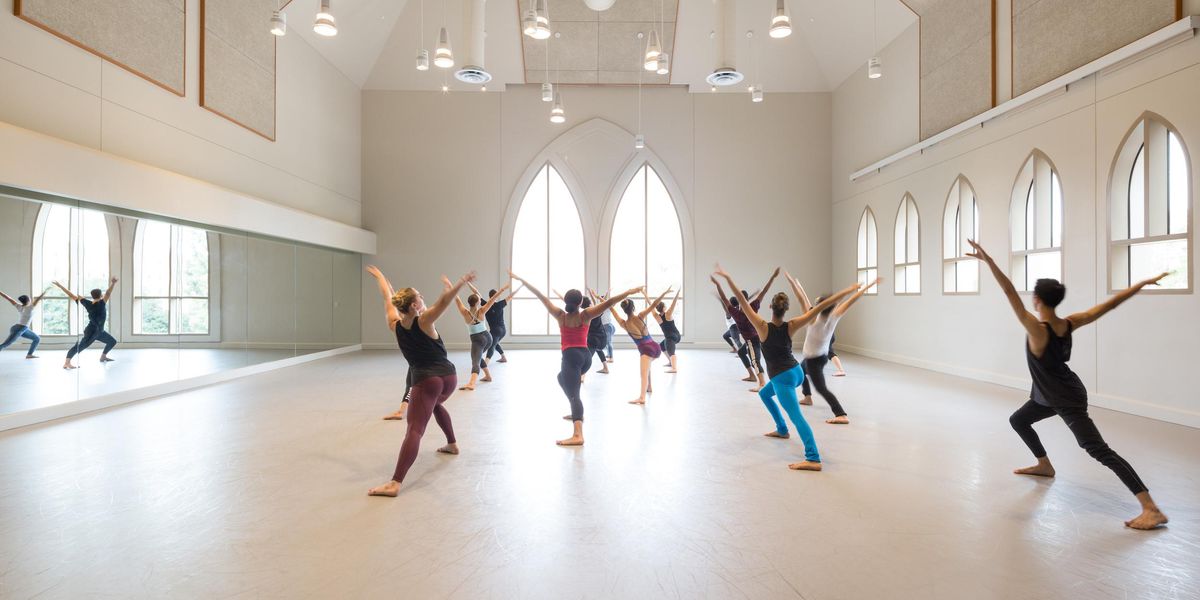On Broadway: The Kids Are All Right
Peter Darling’s choreography for
Matilda taps into the gawky stage.
Young ensemble members in the show’s London staging.
Photo: Manuel Harlan, Courtesy
Matilda.
They are two musicals, with one plot: A young outsider with extraordinary gifts must prevail over the uncomprehending adults who want to make the child conform. In Lee Hall and Elton John’s Billy Elliot, it’s a boy who likes to dance. In Matilda, which book writer Dennis Kelly and composer Tim Minchin based on Roald Dahl’s classic children’s story, it’s a girl who likes to read. In both musicals, the choreography is by Peter Darling. But if you expect to see him repeating himself, think again. The movement in the new show, which has landed on Broadway after winning a passel of Olivier Awards in London, is as different as Matilda is from Billy.
“She’s not a physical prodigy,” Darling says. “She’s a verbal prodigy. The story is about a girl who’s fascinated by words and books. It’s about her imagination as opposed to her physical skills.” So unlike the boys who shared the role of Billy, the girls playing Matilda don’t have very much dancing to do. Even Matilda’s schoolmates, who perform most of the show’s movement sequences, don’t necessarily have to be good dancers. Darling based the choreography on the way preadolescent children actually behave and on the illustrations Quentin Blake provided for the book.
“I took my first ideas from the illustrations,” Darling says. “They’re spiky and angular, and they burst with life. And then I went to a primary school in Wales and I just watched the kids for a week. The one thing that was consistent throughout every second of the day was that they never stopped moving. They were always fidgeting and unable really to sit still, and that was the prompt for all of the movement.”
Twitchy and stompy, the Olivier-winning choreography wasn’t hard for the children to pick up. “As long as they have a natural gift for movement,” Darling notes, “they attach to it very easily, because children tend not to move lyrically. They’re really just at that point of dealing with real coordination and balance.” He does concede that the boys had a tougher time than the girls. “A lot of my stuff,” he says, “especially in Matilda, is actually about being able to coordinate asymmetrical shapes, and that’s quite hard—harder for the boys.”
For the adults in the cast, adapting to the gawky style was harder still. “The movement is not designed to express anything other than the narrative,” Darling says. “It’s not designed to make the performer look sexy or desirable, which lots of movement is and wonderfully does sometimes. This movement is about just simply trying to tell the story every moment.”
That instinct—to sidestep traditional dance and stick to what he calls “abstracted naturalism”—may sound like an aberration in the man responsible for the dance riches of Billy Elliot. But in fact, between his early training in dance and the start of his career as a choreographer, Darling spent about a decade as a performer in Britain’s thriving physical theater scene. He did appear in conventional shows like Fiddler on the Roof. But he cites the time he spent working with avant-garde theater director Lloyd Newson, who founded the seminal group DV8, and Robert Lepage, for whom he starred in a solo adaptation of Hamlet called Elsinore, as crucial to his story-driven approach.
“Often I don’t really see things in terms of steps,” he says. “I’m just really interested in images. The musical, unlike pure dance, is not an abstract form. To just abstractly do dancing in a sort of empty space seems unlikely to me—unless the way that you’re telling the story is, say, through ballet. You’ve got to find a language that reflects the environment in which the musical takes place.”
Matilda’s environment—her vile home and her even viler school—is hardly conducive to what Darling calls “party dancing—everyone just having a good time.” But the story has been delighting young people for decades. Like other British children, Darling grew up on Dahl’s books. “They’re pretty central,” he says, “because they’re so cruel, and kids love cruelty.” Matilda has yet another virtue. “The adults are the ones behaving like children,” he says. “It’s the children who are the saviors, who set the world to rights. That’s tremendously empowering. And everybody has been, at some point in their lives, Matilda—someone who is on the outside but somehow manages to make the most of their skill and triumph over adversity.” Even if that skill doesn’t happen to be dancing.
Sylviane Gold writes on theater for
The New York Times.




